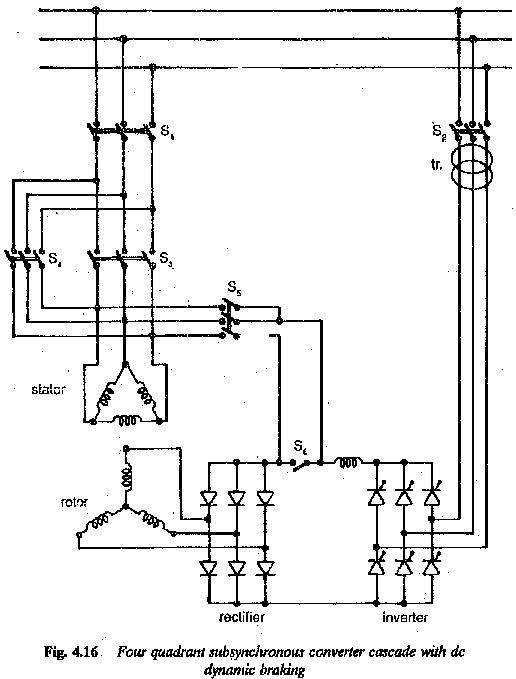Braking and 4 Quadrants Operation:
Subsynchronous converter cascades have been used, till now, in applications requiring one quadrant operation. These can be employed for drives where at least one electrical braking is required. A 4 Quadrants Operation can also be made possible in these cascades, using suitable switching.
The braking is obtained by connecting the stator to the dc supply. The rectified output of the rotor can be used for the purpose. The reverse rotation is obtained by means of plugging using contactors. The drive is similar to a dc drive fed from a converter with armature current reversal.
A 4 quadrants subsynchronous converter cascade employing dc dynamic braking and speed reversal is shown in Fig. 4.16. The system operates as a normal converter cascade when the switches s1,s2,s3 and s6 are closed.
To have braking the machine is disconnected from the mains by opening s3. The stator is connected to the rectified power supply from the rotor by closing s5 and opening s6. Braking torque equal to rated torque may be developed.
Contactor s4 may be used to reverse the direction of rotation. The drive can operate in all 4 quadrants of the speed-torque plane.
The contactors must operate when the current is zero. Due to delay in operation of the contactors, sometimes mechanical braking is employed.
The drive operates free of loss as the energy during running and braking is fed back to the mains.
